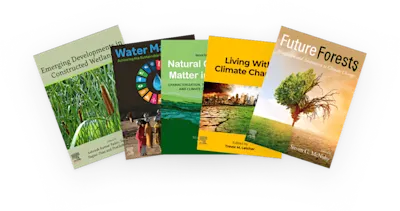
Meso and Microplastic Risk Assessment in Marine Environments
New Threats and Challenges
- 1st Edition - June 14, 2024
- Latest edition
- Editors: Selvam Sekar, Senapathi Venkatramanan, Chidambaram Sabarathinam, Prasanna Mohan Viswanathan
- Language: English
Meso and Microplastic Risk Assessment in Marine Environment: New Threat and Challenges in Marine Environment presents an interdisciplinary approach, offering key technique… Read more

Meso and Microplastic Risk Assessment in Marine Environment: New Threat and Challenges in Marine Environment presents an interdisciplinary approach, offering key techniques and management of microplastic contamination in the disciplines of environmental science, fisheries, oceanography, geology, chemistry, biology and ocean science. Sections cover an overview of microplastic in the marine environment, deal with the origin, occurrences, distribution and various methodologies (for dealing with microplastics) available for microplastics, address the global case study of microplastic separation using recent techniques, and discuss the impact of microplastics on human health and the surrounding environment.
This book is an important step in the field of microplastic pollution mitigation in environmental science as it offers a thorough accounting of the effects of pollutants on the environment, marine organisms, and the public health implications, as such it is relevant for aquatic ecologists, oceanographers, toxicologists, and marine biologists.
- Includes a range of topics from meso- to microplastics, including weathering and fragmentation processes of microplastics
- Presents data from source to sink, such as the occurrence and distribution of microplastics in freshwater bodies, coastal zones and the open ocean
- Presents the impacts of microplastics on marine life as well as microplastics as vectors of biological and chemical contaminants
- Provides important analysis on the solutions and next steps
Meso and Microplastics: Introduction and current scenario
1. Meso and micro plastics in marine environment: an overview
2. Microplastics pollution a new emerging concern in coast environment
3. Distribution and degradation of Microplastics in marine Environment
4. Impact of microplastics in water and sediments quality
Microplastic processes in Marine Environment
5. Occurrences and sources of Microplastic in marine environment
6. Quantification of Microplastic in marine environment: New Concerns and methods
7. Monitoring and assessment of microplastic pollution in water, sediment and fish: methodological aspect
Assessment of microplastics: current trends and techniques
8. Assessment of Microplastic pollution in estuarine environment
9. Microplastic in coastal marine sediments
10. Microplastic pollution in marine sea fish
11. Microplastic pollution in marine sea salt
12. Assessment of Microplastic pollution in seawater and marine algae
13. Microplastic pollution in marine sea food (Oyster, seaweeds)
14. Absorption of heavy metals on Microplastics
15. Scale of contamination level on heavy metals in microplastic
16. Nano plastic level contamination in marine environment
Management and Remediation
17. Microplastic risk assessment and impact on human health
18. Microplastic impact in global view: Regulation and Management practices
19. Reducing, Recycling and Fundamental Rethinking of Microplastics
20. Present Advances in Strategies to Mitigate the Microplastics contamination
- Edition: 1
- Latest edition
- Published: June 14, 2024
- Language: English
SS
Selvam Sekar
SV
Senapathi Venkatramanan
CS
Chidambaram Sabarathinam
PV